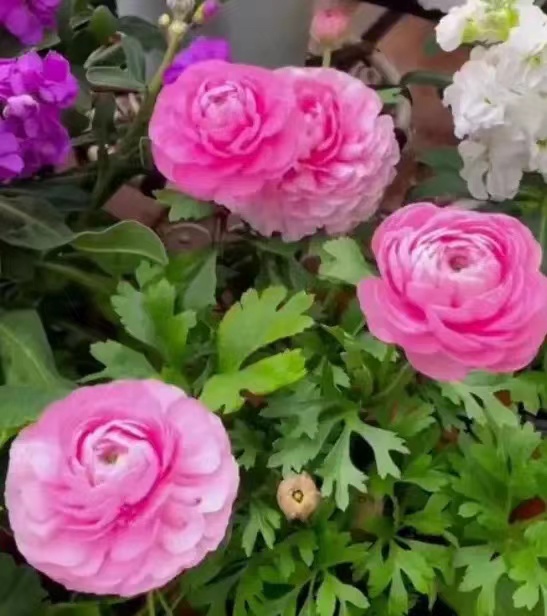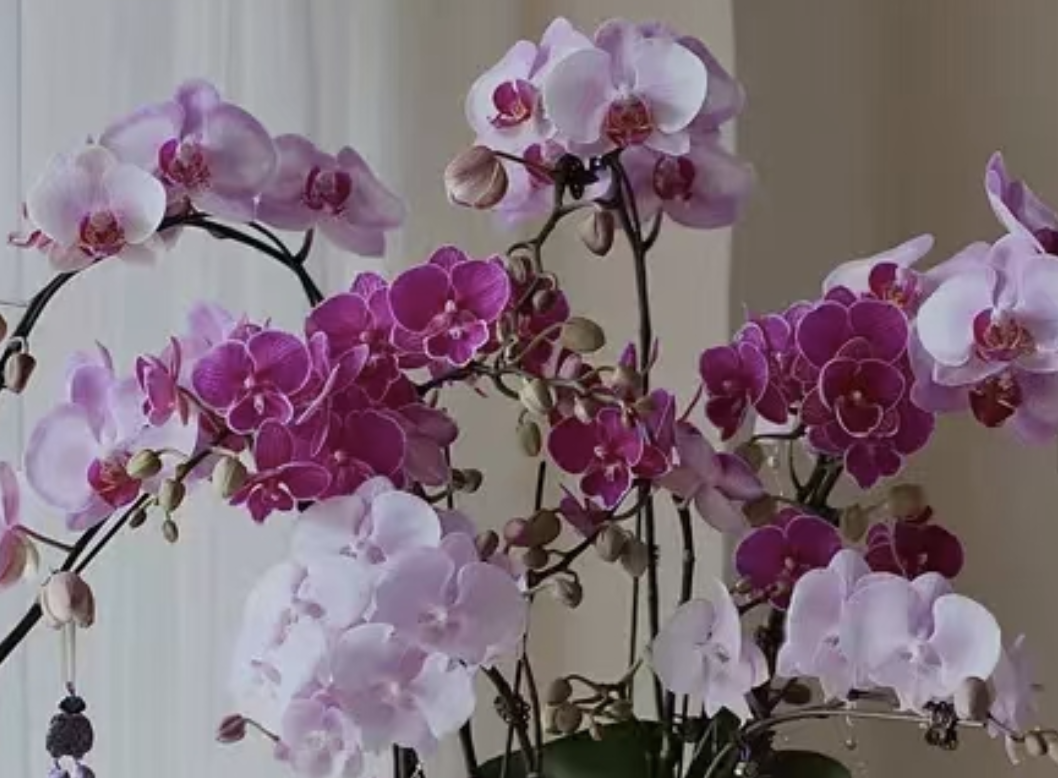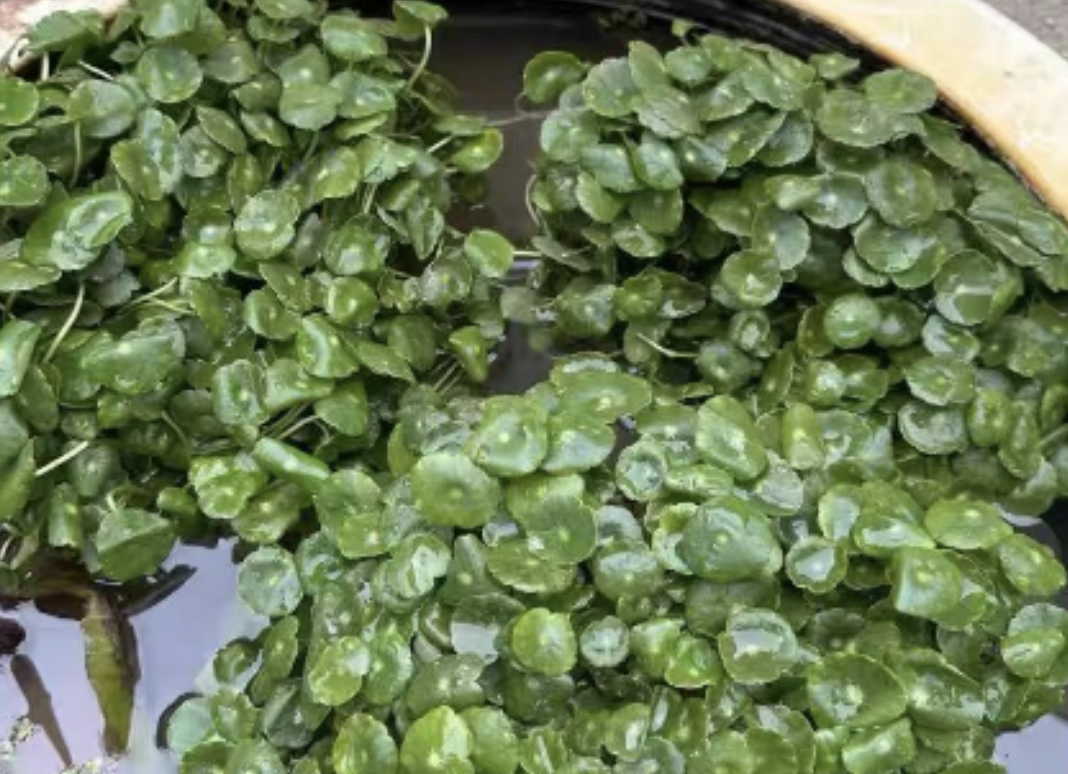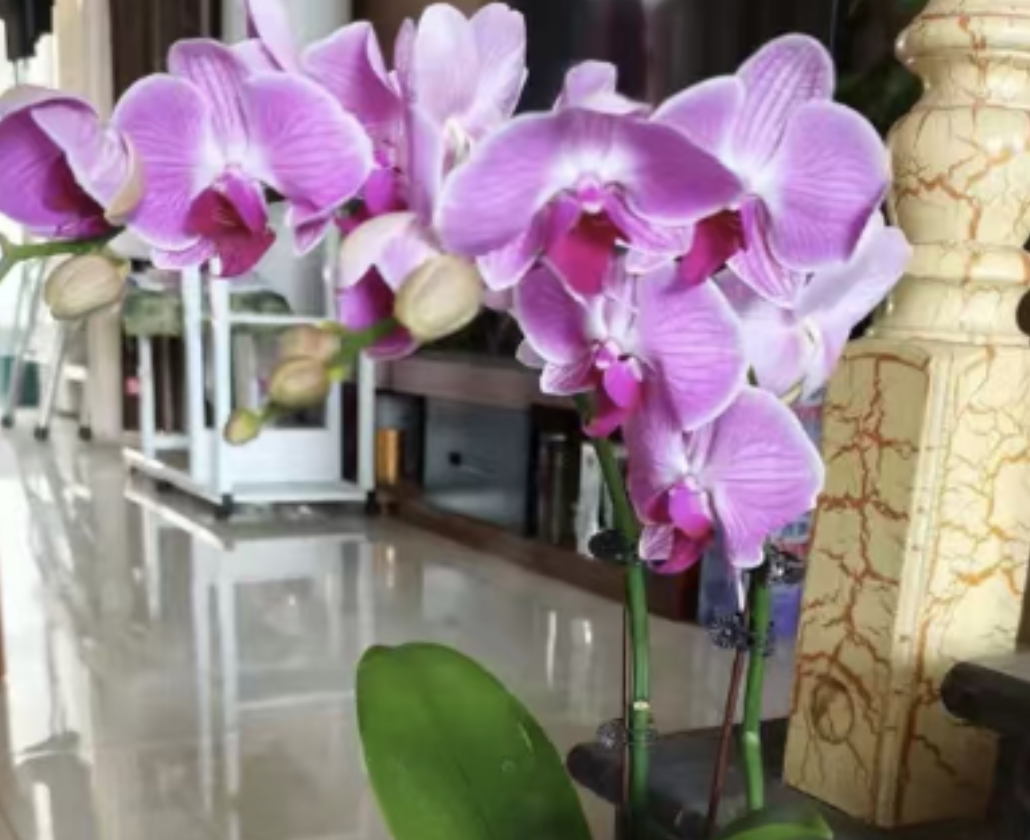Ranunculus asiaticus, as a member of the Ranunculaceae family, is a perennial herbaceous plant. The plant height is usually between 20 and 50 centimeters. The tuberous root is spindle-shaped, and several are often clustered at the root neck. The stem is solitary or has a few branches and is attached with fine hairs. In terms of leaves, the basal leaves are broad ovate, with long petioles, resembling celery; while the stem leaves are smaller, almost sessile, and are bipinnate ternate leaves. The flowers are solitary or several clustered on the top of the stem. There are many flower colors, including red, white, orange, purple, and other colors. The petals are double or semi-double, and the flower diameter can reach 3 to 4 centimeters. The flowering period is mainly from April to May.
Ranunculus asiaticus is native to southwestern Asia and southeastern Europe (along the Mediterranean Sea) centered around Turkey. It is now widely cultivated in European countries such as France and Israel and has gradually been cultivated by countries all over the world. This plant prefers a cool and semi-shaded environment and is afraid of heat, humidity, and drought. It is even less tolerant of severe cold and freezing. In most areas of China, Ranunculus asiaticus will enter a dormant period in summer. The suitable growth temperature is about 20°C during the day and 7-10°C at night. In addition, Ranunculus asiaticus also has certain requirements for the soil. Well-drained, fertile, and loose neutral or slightly alkaline soil is most suitable.
Eustoma grandiflorum, also known as lisianthus, Turkish bellflower, Eustoma russellianum, or Texas bluebell, is a flower with rich colors and elegant forms. Its flower colors are both single and variegated, and the petals are divided into single and double petals. The growth environment of Eustoma grandiflorum requires warmth, humidity, and sufficient sunlight. It is relatively drought-tolerant but not water-tolerant. The suitable growth temperature is between 15-28°C, and the night temperature should not be lower than 12°C. If the temperature is lower than 5°C in winter, the leaves will form a rosette shape and cannot bloom. At the same time, Eustoma grandiflorum is relatively sensitive to light, and long days of sunlight help its basal leaves grow and flower buds form.
Comparison of maintenance difficulty
Ranunculus asiaticus likes soil with good drainage performance. It is recommended to mix garden soil, leaf mold soil, and river sand in a ratio of 3:2:1 and add a small amount of well-composted organic fertilizer. When potting, choose sandy cultivation soil rich in humus, loose and fertile, and with strong air permeability. Ranunculus asiaticus likes a semi-shaded environment, but in winter, it should be placed in a sunny and warm place. The suitable growth temperature is about 20°C during the day and 7-10°C at night. It should be noted to avoid high temperature and high humidity environments to prevent leggy growth, yellow leaves, and stem base rot. Keep the soil slightly moist and avoid water accumulation. Adequate base fertilizer should be applied before planting, such as well-composted cake fertilizer and livestock manure and other organic fertilizers. Timely topdressing can be done during the growth period. In the early stage, urea is mainly used, and in the later stage, compound fertilizer is mainly used. It is mainly propagated by two methods: division and sowing. Division is carried out in September and October in autumn, and sowing is carried out in warm spring. After flowering, the spent flowers should be pruned in time to promote the healthy growth of the plant.
Eustoma grandiflorum is not very strict in its soil requirements, but it is best to use soil with good drainage and rich in humus. When potting, choose a pot with good air permeability. Eustoma grandiflorum needs sufficient sunlight, especially long days of sunlight help it bloom. The suitable growth temperature is between 15-28°C, and the night temperature should not be lower than 12°C. It should be noted to avoid low-temperature freezing damage in winter and high-temperature heat damage in summer. Eustoma grandiflorum has higher requirements for water, likes humidity but is afraid of waterlogging. Watering should be done when the soil is dry and then wet, avoiding water accumulation. During the growth period, a thin liquid fertilizer can be applied every about 10 days to promote plant growth and flowering. Eustoma grandiflorum is generally propagated by two methods: sowing and cutting. Sowing needs to be carried out under suitable temperature conditions; for cutting, healthy branches can be selected. After flowering, the spent flowers and branches should be pruned in time to keep the plant beautiful and promote the next flowering.
From the perspective of maintenance difficulty, Ranunculus asiaticus and Eustoma grandiflorum each have their own characteristics. Ranunculus asiaticus has higher requirements for soil, light, temperature, and water conditions, but once its growth habits are mastered and suitable environmental conditions are provided, it can produce beautiful flowers. Eustoma grandiflorum is relatively drought-tolerant and has stronger adaptability to soil, but in high temperature and high humidity environments, attention still needs to be paid to preventing pests and diseases and maintaining good ventilation. Therefore, there is no absolute superiority or inferiority in maintenance difficulty between the two.
Is Ranunculus asiaticus an annual or perennial plant?

Share with
Tagged in :




Leave a Reply